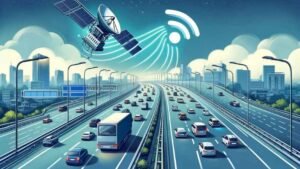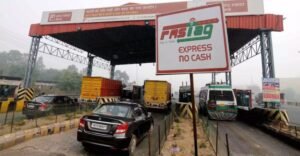The Centre plans to implement satellite-based toll collection on highways before the Model Code of Conduct for the 2024 general election goes into effect, Road Transport Minister Nitin Gadkari said in Parliament on Wednesday.
“We are trying to implement a satellite-based toll system very soon, perhaps before the Code of Conduct for the Lok Sabha election,” Gadkari remarked during the Rajya Sabha session.
The technology, which has been under government review for over three years, will replace FASTags, which are prepaid and rechargeable tags that use radio frequency identification (RFID).’
The technology, which has been under consideration by the government for more than three years, would enable barrier-free passage of automobiles, eliminating the need for them to halt toll payments, according to the Minister. He said that a photo of the car’s registration plate would be acquired, and the toll payment would be deducted depending on the actual length of the roadway traveled by the vehicle.
What is a Satellite-based Toll system?
Every vehicle that registers for toll collection under the Global Navigation Satellite System will be equipped with an onboard unit (OBU) connected to a constellation of satellites. According to an NHA official, the OBU would be the same as the vehicle tracking device made mandatory for some kinds of vehicles, such as those carrying hazardous chemicals. The tracking gadget will allow for distance-based toll collection, as well as barrier-free vehicle mobility over time, according to the individual. The OBU will also be linked to a wallet where the toll money will be debited.
A GPS gadget in your car or an Automatic Number Plate Recognition (ANPR) camera. The gadget monitors your movements on the road, determining your entry and departure locations on tolled portions. The technology recognises the toll plazas you’ve passed and calculates the appropriate rates based on your trip distance. This eliminates the “one-size-fits-all” method of setting tolls at booths, making it more equitable for cars that travel small distances.
For the technology to be applied, the Indian Highway Management Company Limited must complete geo-fencing of national highways to record their coordinates. The government will also need to change the National Highway Fee Rules to allow distance-based toll collection, as well as the Motor Vehicles Act, of 1988.
While the government is rushing to implement the new toll collection system before the elections, an official from the Ministry of Road Transport and Highways said on the condition of anonymity that the concept for the technology being used had not yet been finalized and was still in the development stages.
An official with the National Highways Authority of India, which will deploy the system, stated that it has been tested in Delhi and Gurgaon and that a trial would be held in Bangalore soon.
Present Toll System and it’s impact
FASTags, mounted on the vehicle’s windscreen, allow users to pay the highway charge online, avoiding stopping at toll-collecting booths set up by highway operators. The government has enforced the adoption of FASTag for both private and commercial cars from February 16, 2021. Vehicles that do not have a valid or operable FASTag are liable to a penalty of paying double the toll price.
The installation of FASTag has substantially reduced the average waiting time at toll plazas to 47 seconds, a significant 93% improvement from the previous average of 714 seconds, as reported by India to the World Bank last week.
While there has been tremendous success in lowering wait times at certain locations, notably those near cities, densely populated communities continue to endure delays at toll plazas during peak hours. The plan to introduce GPS-based tolling is part of an effort to reduce wait times at toll plazas.










